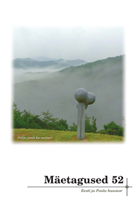Idioomide pildiline kujutamine internetihuumoris
Pictorial representation of idioms in Internet humour
Author(s): Tomasz PiekotSubject(s): Customs / Folklore
Published by: Eesti Kirjandusmuuseum
Keywords: idiom; Internet culture; humour; demotivators; visualisation
Summary/Abstract: The analysis of new media, i.e. Internet, is a serious problem for logocentric communication studies. Usually, only the verbal aspect of genres is described, while other qualities are seen as marginal phenomena. In this paper I want to discuss the practice of visualising idioms in Internet humour. Even a cursory glance at the new media shows two prominent trends: 1) idioms appear in various types of new media texts but tend to dominate in those with a creative function, 2) idioms are spontaneously visualised, i.e. communication partners translate them into visual language. The paper presents results of empirical studies performed on a corpus of demotivators containing idioms. It shows that creative texts, especially humorous ones, subject idioms to different visual transformations. Visual translation may involve the structure of an idiom (individual words) making the visualisation literal, or its metaphoric meaning, in which case the visualisation is figurative (in its two variants – exemplifying or reinterpreting). From the cultural perspective, is it notable that idioms are not very frequent in Internet humour. Demotivators cited idioms in only 1.5% of all demotivating messages in Polish-language Internet. It seems that Internet users have probably found other visual carriers of figurative meaning. Discovering their social status might be the key to understanding the new culture – the culture of the web.
Journal: Mäetagused. Hüperajakiri
- Issue Year: 2012
- Issue No: 52
- Page Range: 141-160
- Page Count: 20
- Language: Estonian

